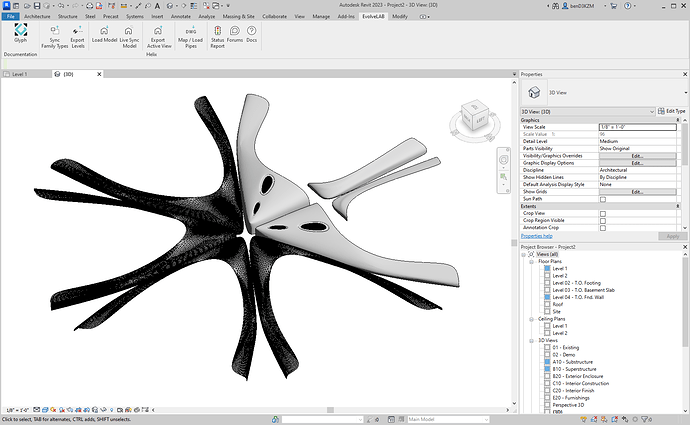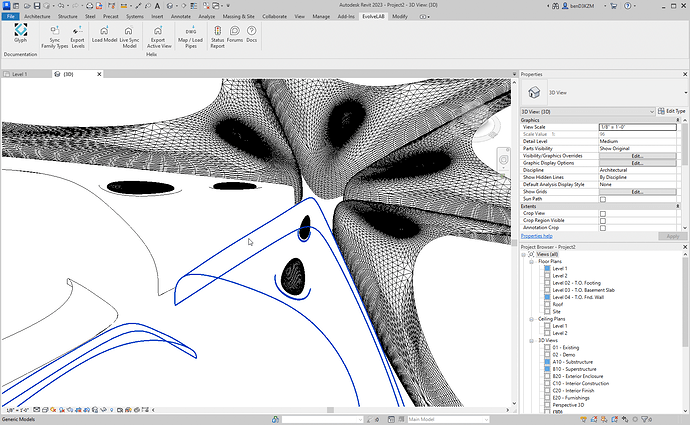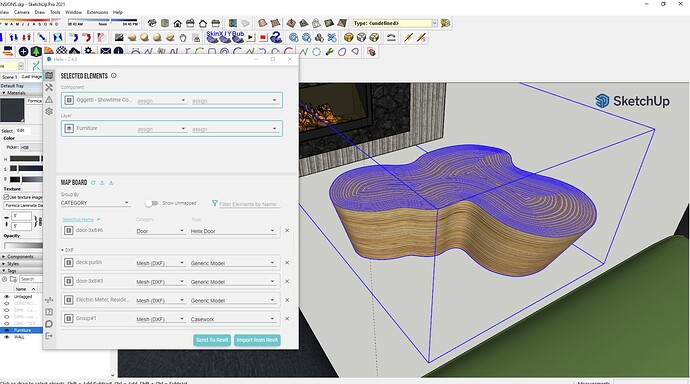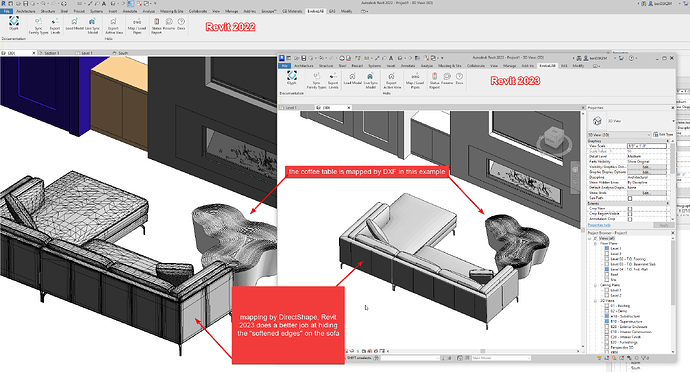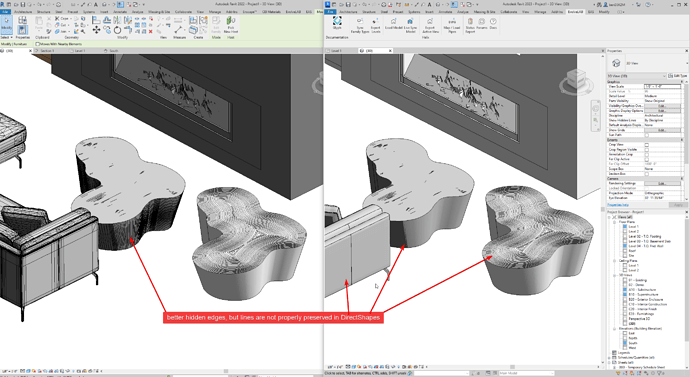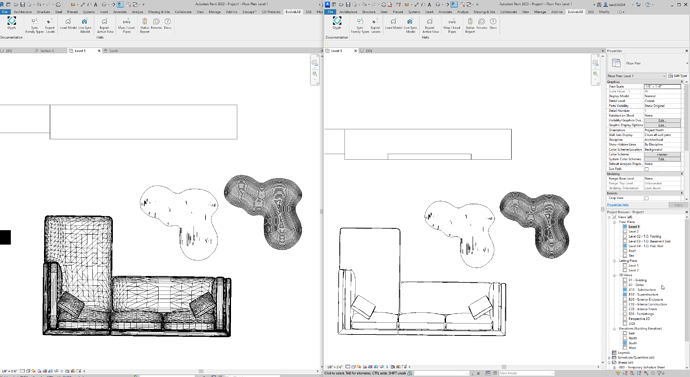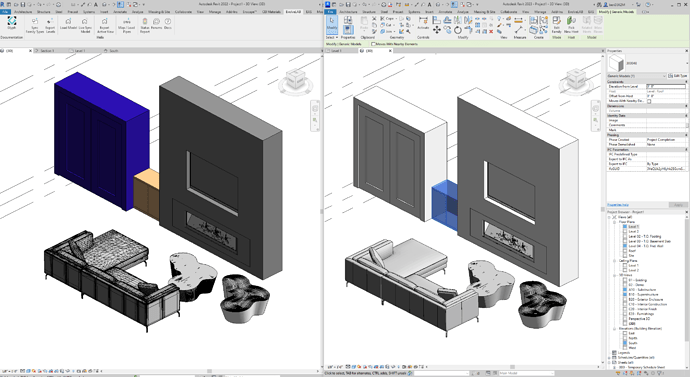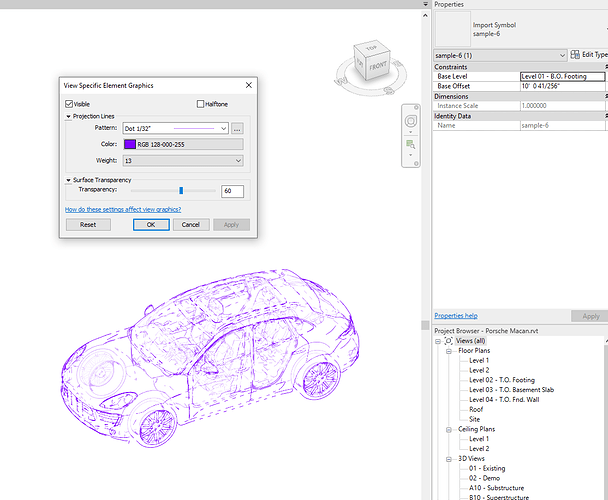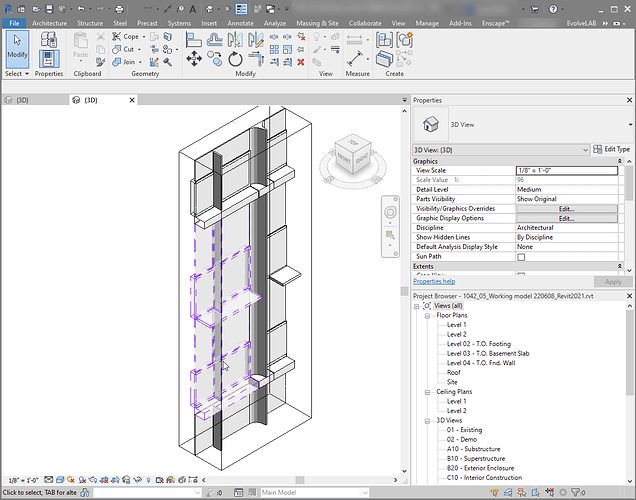
Beijing Daxing International Airport Test
I recently converted the Beijing Daxing International Airport by ZAHA SketchUp model downloaded from the SketchUp 3D Warehouse in a previous post, and wondered how the DXF versus the DirectShape functionality is different in Revit 2023 given the new hidden mesh polygon support on some of the import types. The findings were somewhat inconsistent. Unlike previous Revit versions, Revit 2023 actually tries to hide the “softened edges” but it does not succeed on all the imported geometry resulting with partial success. See images below for reference.
The airport terminal wings that are directly adjacent to the runways have meshes with “unsoftened” polygon edges, while the other wings translate properly.
Furniture Test
Then I ran another test with the Oggetti Coffee Table, and a sofa.
Revit 2022 on the left & Revit 2023 on the right comparisons
When using DirectShape for the coffee table, the wood grain lines disappear for the most part loosing the aesthetic that should be preserved. The couch looks great with DirectShape in Revit 2023.
DXF Graphic Override Limitation
One limitation of DXF meshes that DirectShapes don’t have, is that the DXF mesh surface does not respect graphic overrides. They can only be driven by the material assigned. You can graphically override the lines, but not the surface (beyond surface transparency).
Takeaways
The new DirectShape mesh handling in Revit 2023 is promising and has the potential to replace the DXF imports wrapped in families. However, in its current state it is unreliable as it produces mixed results.
